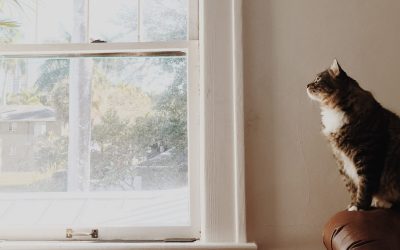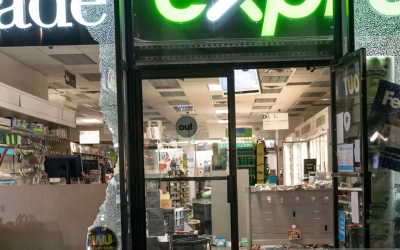With all the different types of window film available, making an informed decision can be daunting. There are a variety of measurements and specs that can help you figure out which product is right for you, but they can be hard to understand if you are not well versed in window film lingo. This article serves as a legend for all different types of window film specifications and should help shed a little light on the subject.
VLT: Visible Light Transmission
This number, given as a percentage, simply tells you the amount of solar visible light that travels through glass. Glass with a high VLT will allow most of the light that hits it to pass through, so the glass will appear very clear. A low VLT describes glass that blocks most of the light from passing through. Untreated windows, like standard windows in most houses, have a very high VLT, around 89%.
Glass with a high VLT isn’t as effective at eliminating glare as darker windows with a low VLT, but they do have a more natural aesthetic. The correct VLT can be found by considering your desired aesthetics, and the primary use of the glass surface.
VLR: Visible Light Reflectance
VLR is the amount of visible light that a window reflects; a window with a high VLR value will appear reflective with a mirrored appearance. A window with a high VLR will block light from passing through it, because the majority of light is reflected away.
The VLR value of a piece of glass can change is response to several conditions. For example, a piece of untreated glass will probably have a base VLR of about 6% (very small, as most light passes through). However, the VLR for that same piece of glass could increase to 50% if light hits the glass at a sharp angle, causing glare.
Reflectivity will also vary as light levels change on either side of the glass. A mirror effect can take place when there is a strong imbalance in light levels – like many of us observe while sitting inside with the lights on while it is dark outside.
SC: Shading Coefficient
This measurement is used to describe the solar heat control capability of a window treatment. The SC is the ratio of solar heat gain observed through a window film compared to the solar heat gain observed for untreated glass under the same conditions.
SHGC: Solar Heat Gain Coefficient
SHGC replaced SC as the standard shading coefficient used in North America, as SHGC is more precise and takes into account more variables. SHGC describes the fraction of incident solar radiation that passes through a window both directly and is absorbed and subsequently released inward. SHGC is shown as a value between 0 and 1; the lower the value, the less solar heat that is transmitted.
The National Fenestration Rating Council (NFRC) measures this value for the entire window, including the frame. Occasionally, “centre-of-glass” SHGC is used, which only describes the effect of the film. Whole window SHGC will be lower than centre-of-glass SHGC due to the effects of the frame and is generally below 0.8.
Solar Transmission
This is the ration of the amount of total solar energy that passes through a window film compared to the amount of solar energy that the film is exposed to, expressed as a percent. Solar transmission refers to solar energy over the full solar wavelength spectrum (300 to 2100 nanometers) and thus encompasses infrared, visible, and ultraviolet light.
Solar Reflectance (EXT)
This is the ration of the amount of total solar energy that is reflected outward by a window film compared to the amount of solar energy that the film is exposed to, expressed as a percent. Similar to Solar transmission, solar reflectance takes into account solar energy over the full solar wavelength spectrum.
Solar Absorption
Any type of window film will absorb a small amount of solar energy. The solar absorption value tells us how much energy is absorbed by a film. As solar absorption refers to the energy that is neither transmitted nor reflected, we can ascertain its value with the following formula: Solar absorption = 1.0 – (solar transmittance) – (solar reflectance).
TSER: Total Solar Energy Rejected
This value is particularly useful for comparing different types of window treatments. TSER simply refers to the total amount of solar energy that is rejected by a window film after installation. The higher this number is, the more heat is prevented from passing through the glass. If you are looking to increase comfort during sunny days, or lighten the load on your AC units, this is a value to pay particular attention to.
U-Value
This number describes heat loss through glass. The u-value is a measurement of heat transfer due to temperature differences on either side of the glass. U-value is the amount of heat passing through one square foot of glass per hour for each one-degree Fahrenheit temperature difference on either side of the glass. A low u-value describes glass that doesn’t allow very much heat transfer.
RHG: Reflective Heat Gain
This measurement is used to describe the total heat gain through glass for a given set of conditions. This spec is a combination of some of the other terms that are described on this page.
RHG considers the differences in temperature on either side of the glass as well as the effect of solar radiation. The units are Btu/hr.ft². RHG = [(89°F – 75°F)(Summer U-value) + (200 Btu/hr.ft²)(Shading Coefficient)].
UVR: Ultraviolet Rejection
High-energy ultraviolet rays are the primary cause of skin damage, fading upholstery, and damage to interior furnishings. UVR tells you the total amount of ultraviolet radiation that a window film blocks from passing through the glass.
Hopefully, this article has cleared up a few mysteries for you and will serve as a resource to help guide you towards window film fulfillment. If you have any further questions about terms on this list, or are looking for more information about window film, just give us a shout.



